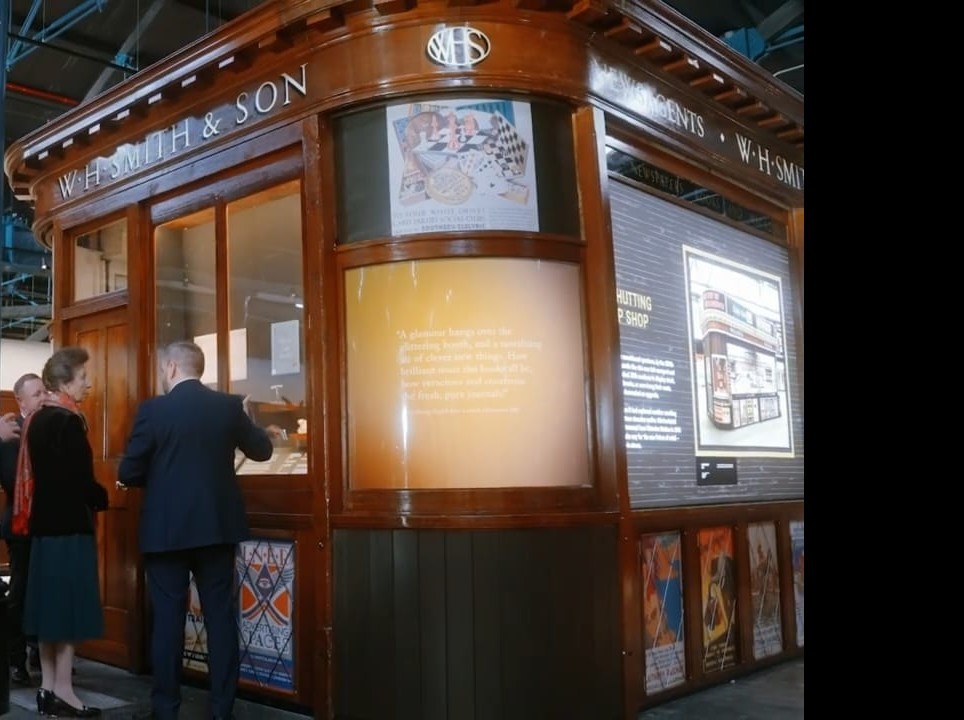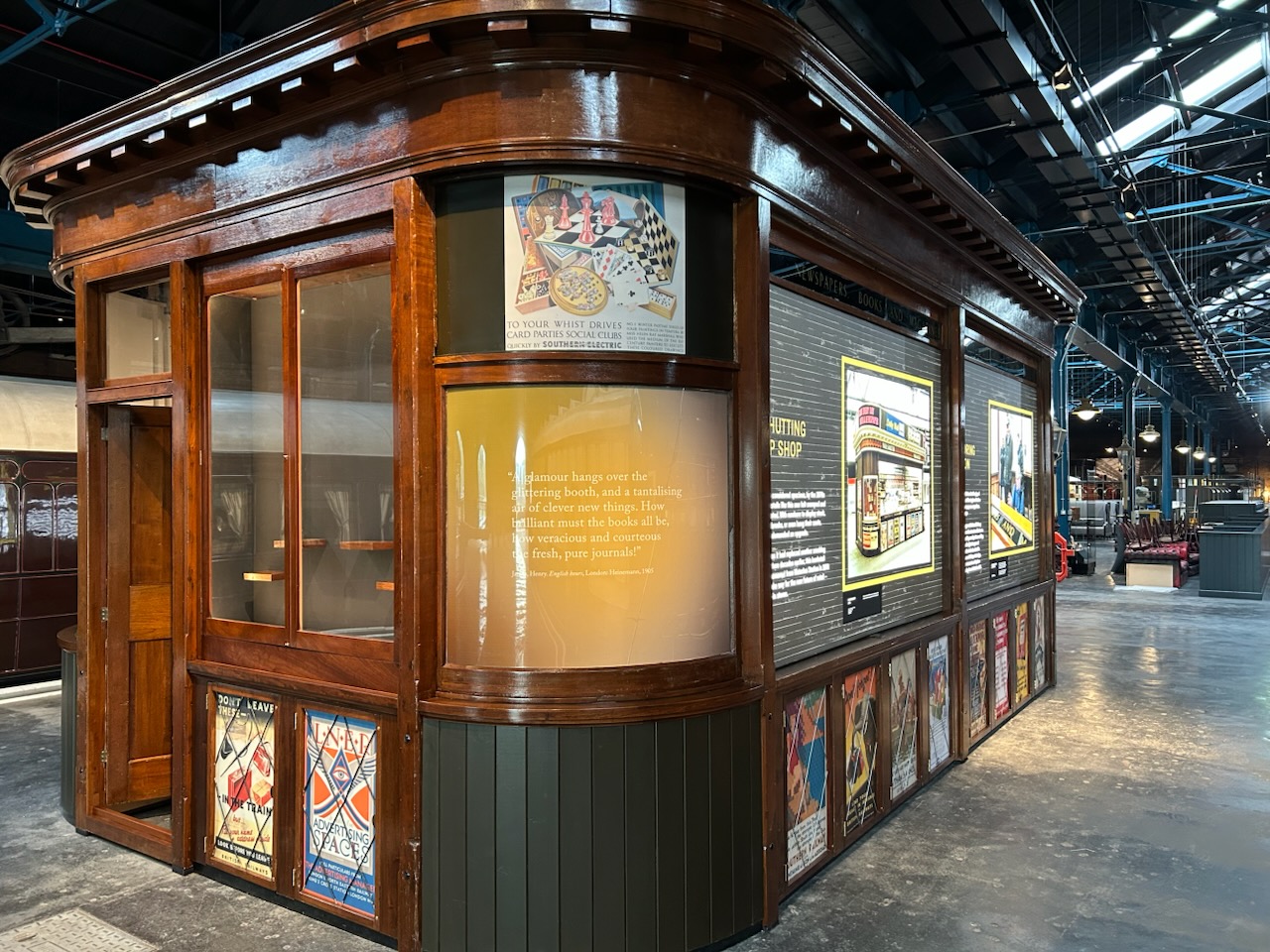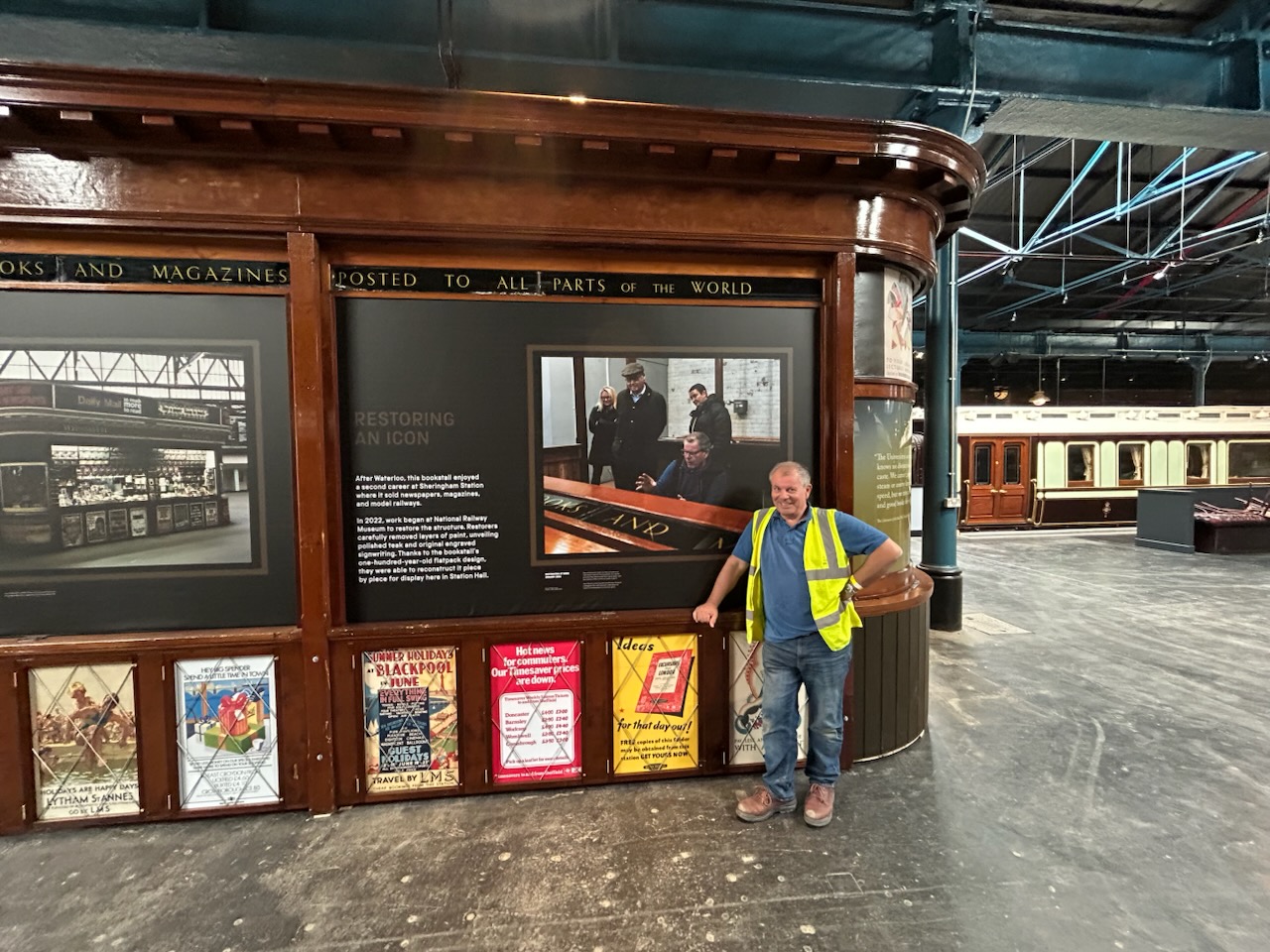Read all about it! York firm restores historic railway kiosk as part of £11m NRM initiative
 Decades of local craftsmanship expertise has been behind the restoration of a 1920s railway kiosk which is now one of the centrepieces of the new £11million revamp at York’s National Railway Museum.
Decades of local craftsmanship expertise has been behind the restoration of a 1920s railway kiosk which is now one of the centrepieces of the new £11million revamp at York’s National Railway Museum.
The WH Smith news kiosk and bookstall which once graced Waterloo Station has undergone a two-year restoration programme in the capable hands of York furniture restorers and french polishers, Andrew G Podmore & Son. The result has won praise from the museum and from HRH The Princess Royal (pictured), who performed the official opening of the new display in September this year.
“We were under no illusions about the scale of the task when the NRM approached us back in 2021,” says A G Podmore’s MD David Podmore. “Designed to be under cover on station platforms, the kiosk had been outside and exposed to the elements for several years before being dismantled and put into storage. But I was confident we had the team with the expertise to do justice to this unique piece of railway history.”
The kiosk, which measures 25 feet long by 14 feet wide, is one of just a handful which remain of the hundreds which featured on station platforms across the UK from the 1920s right through until recently. In their own way they were revolutionary. “Before the advent of the internet, these kiosks were the news superhighway. Updated newspaper editions would be delivered to kiosks up to three times a day to be displayed alongside books for sale. The counters also worked as lending libraries for those making train journeys,” explains David Podmore.

The structures, originally supplied flat pack for assembly on site, were made primarily of teak, the same teak used to make railway carriages. Some parts, counters and the slatted panels beneath, comprised softer wood which had rotted when exposed to the elements over time.
The roller shutters, a distinctive feature and security for when the kiosk was closed, were also made of 9ft long teak slats joined by iron hinges. Whilst the teak had survived, the hinges themselves were in dangerous decline and no longer capable of safely holding the weight of the roller.
Before they began the painstaking work of conserving and restoring the historic treasure, the Podmore’s team meticulously collated pictures and plans of kiosks through the ages then laid out and part-assembled the components they had salvaged, to assess the scale of the challenge ahead.
“Amazingly, we managed to source teak offcuts which had been used for railway carriage building and were able to use this to replace missing parts of the structural frame and repair the post bases and cabinet feet that had rotted.
“The softwood panels under the counters we had to replace, but we are conservators at heart, and we have left these in an unfinished state internally so that people can clearly see what is original and what is new, in the resulting exhibit.”
Whilst for safety reasons they couldn’t be reinstated, Podmore’s retained the original rollers which are archived at the museum. In their place in the finished kiosk, the sense of rollers is recreated with display screens and features information panels.

A goalpost structure is at each end, and the counter posts and cornice frames are connected by three dovetailed beams to create a roof structure onto which are affixed the original cornices. It took two 6m x 5m gantries and heavy-duty chain lifts to position the completed roof structure in place. Despite the original components being over 100 years old, the complete structure came together millimetre perfectly.
It is A G Podmore’s decades of french polishing expertise that brings the kiosk back to its original stylish glory with its distinctive deep glossed polished appearance. With respect for traditional methods, the whole thing is constructed without glue. Podmore’s managed to retain and repair the original curved glass panels. The team crafted replacement glazed cupboard doors for the display cupboards and, using original gauge wire, even recreated the wire grills which sit under the counter to hold the newspaper headline panels.
Reparation work on the cornices revealed the incised outline of the original signwriting from a century ago and this template has been used to recreate a perfect match.
The kiosk, which now stands proudly alongside the royal carriage in its new permanent home in Station Hall. The exhibition is expected to attract thousands of admiring visitors in the coming months.
 David Podmore alongside finished exhibit
David Podmore alongside finished exhibit
Andrew McLean, Assistant Director and Head Curator of the National Railway Museum, said: “The National Railway Museum are extremely proud that the restored WHSmith bookstall stands as one of the star objects in the newly reopened Station Hall. The restoration and conservation of this collection item have been meticulous, and we are delighted the kiosk is now on public display.”
David Podmore comments:
“We’re immensely proud of the work we have done in bringing this important heritage structure back to its original glory. It is by no means our first railway heritage project and we hope it won’t be our last. Part of the pleasure has been in researching the subject then ensuring that we use our collective expertise in cabinet making, french polishing, restoring and conserving, and associated skills, to deliver such a nationally important project. I pay tribute to the whole team at A G Podmore & Son, and to those within the railway museum team with whom we have worked closely, to bring this project to such a successful conclusion.”
The team at Podmore’s who worked on the project includes Andrew Jackson, Chris Caudwell, Jonathan Collantine, Mark Livesey (now retired), and David Podmore whose father, Andrew, established the business in 1968.
For further information visit www.agpodmore.co.uk













